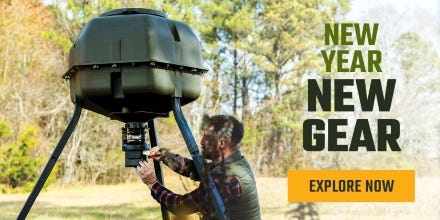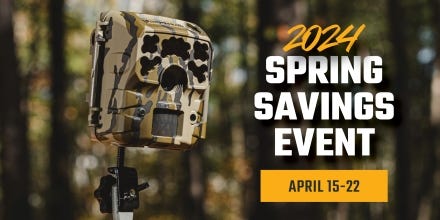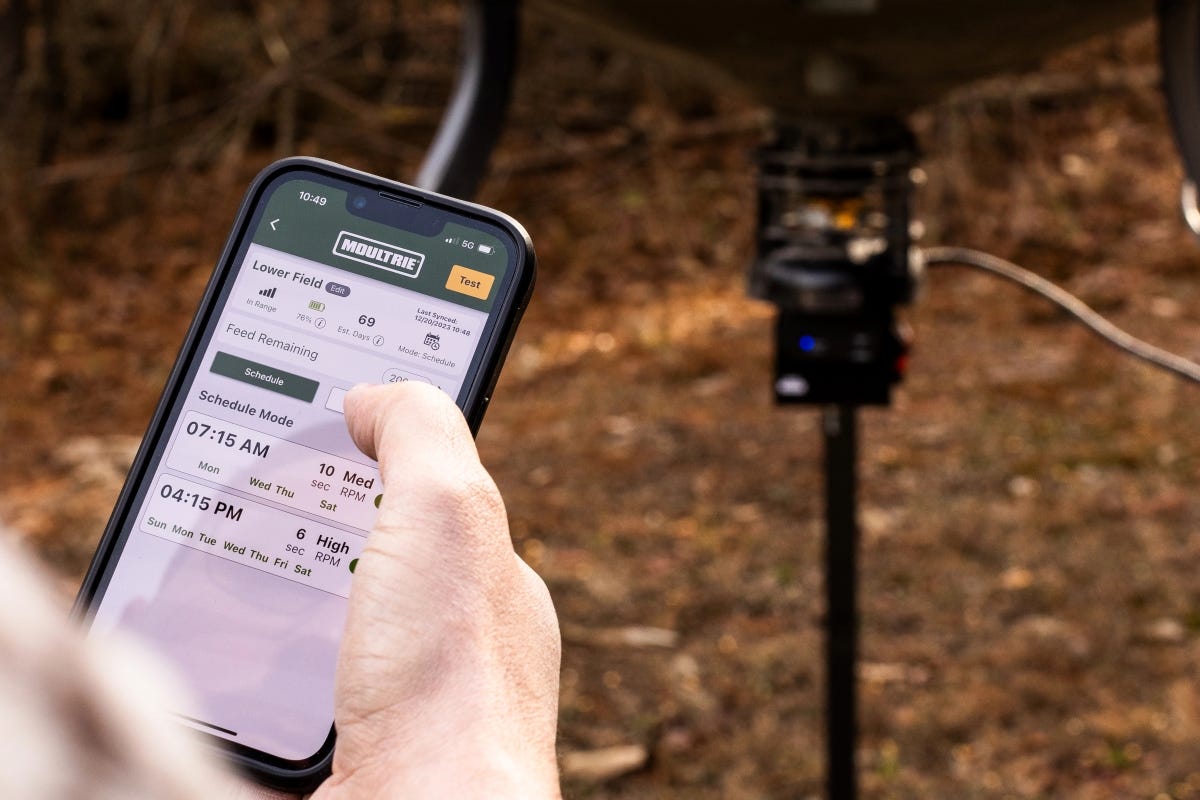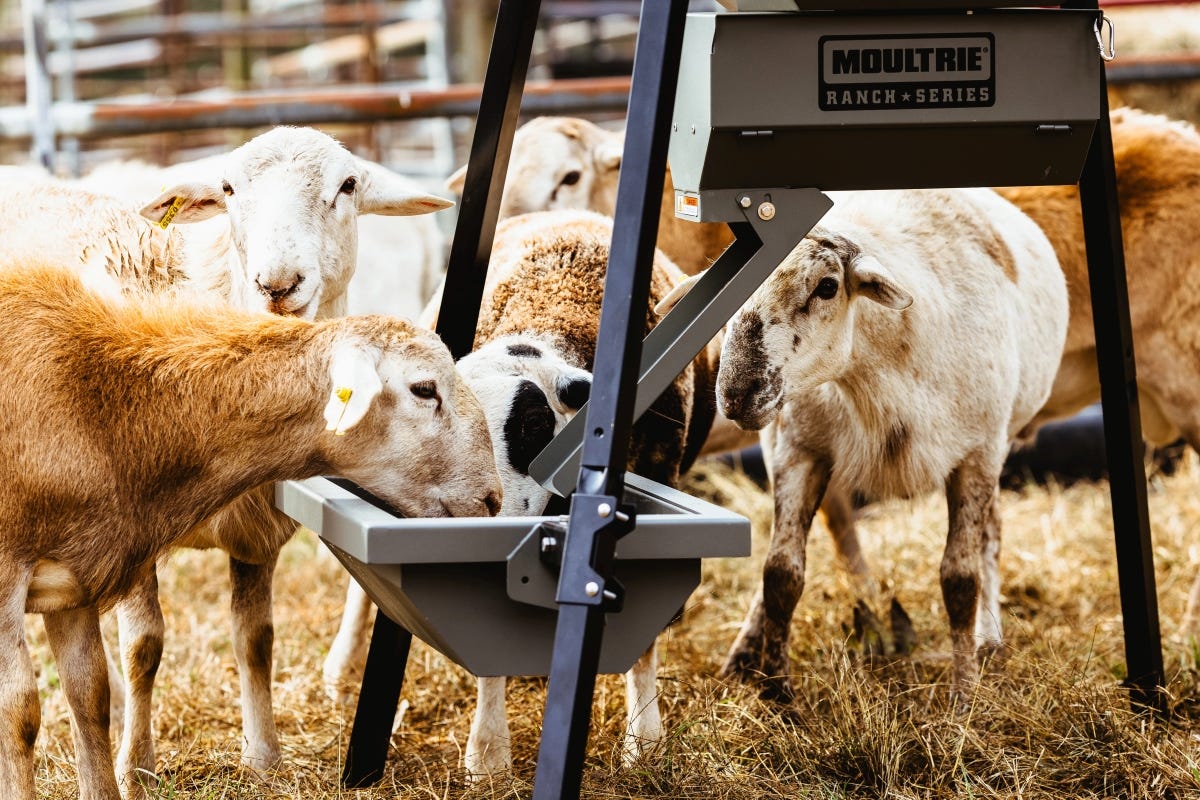- Sep 22, 2014
What Deer Eat and How to Feed Them
As you’re gearing up for hunting season, knowing what, when and where deer prefer to eat can help you understand – and pinpoint – where to find them. Whether your goal is optimal game management, a successful hunting season, superior photographs or just ideal observation, look for the right food sources at the right time of year, and you’ll experience greater success.
Kip Adams, certified wildlife biologist and director of education and outreach with Quality Deer Management Association (QDMA), shares some thoughts and tips that he’s learned from a lifelong interest in whitetails and 12 years with QDMA, a non-profit wildlife conservation organization that specializes in education and outreach for hunters and landowners.
NATURAL FOOD SOURCES
Deer are herbivores… and slaves to their stomachs. As Adams mentions, white-tailed deer have been known to eat more than 600 different plants, fruits, acorns and nuts. But what most people don’t realize is the importance of forbs (annual herbals that are not grasses). He states, “Broad-leaf plants and flowering plants or wildflowers that many people consider to be weeds are very important food sources for the deer from spring to early summer, or even year-round. When I was at the University of New Hampshire, our research found that over half of the deer’s daily nutrition in the summertime was from green leaves. This is definitely worth noting; for whitetails, forbs are very nutritious.”
Moving into autumn, deer will take advantage of falling nuts and acorns. And in the winter, when the spring and summer growth is gone and the selection of foods is limited, whitetails will eat whatever they can find, such as buds, bushes, twigs, fallen leaves and other woody plants. Unfortunately, these food sources provide less nutrition than the preferred, non-woody plants, and if consuming these sources only, the deer could waste away or starve during long winters in cold climates.
In addition to the whitetails’ natural browse from season to season, there are also many crops they love to eat. “Deer are true opportunists when it comes to agricultural crops,” Adams explains. “They love alfalfa and soybeans, and if they have access to these food sources, they will certainly make use of them.” Of course, deer also love cornfields – for bedding and for eating – and they often seek out grains like wheat, oats, and barley. So when the grain ripens in the fall, much to a farmer’s chagrin, you can bet that the white-tailed deer are nearby.
FOOD PLOTS
Farmers may balk at the idea of purposefully attracting wildlife in to their plantings, but hunters know that food plots are an effective tactic for feeding and bringing in whitetails. These crops, which are planted specifically to supplement nutrition provided by native vegetation, make forages available at critical, nutrient-deficient times of the year and can make a big difference in the size and the health of a deer population.
“I’m a big proponent of food plots, Adams claims, “and I plant many acres of food plots, myself. These plantings can make a direct, positive impact on the deer herd and on their dietary intake because they enable the animals to have access to higher quality food throughout the year. It’s basically strategic, nutritional planning for 12 months… or as close to 12 months as possible.”
If you have the time, funds and acreage to spare, consider starting a small food plot on your property. Firebreaks, cut-overs, swamps, and wooded areas are some of the best locations to plant. “For the ultimate deer-hunting success, you’ll find that corn and brassicas work great in the North, “Adams said. “In the South, clovers, oats, and peas work best.”
You can also try some other options for increasing the amount of natural food sources on your property. For example, pruning fruit-bearing trees to encourage more fruit production, fertilizing field edges where browse tends to thrive, thinning out immature stands of trees to promote healthy tree growth, and browse cutting to create more food and cover are all effective methods to help ensure that deer have continuous sources of nutrition and that they remain on your property instead of seeking out food elsewhere.
According to Adams, “People shouldn’t underestimate the value of food plots for effective deer management. There are many added benefits to planting, even for other native wildlife, like turkeys, quail and songbirds. And there are actually lots of products out there to help with planning, establishing, and managing food plots.”
Beyond the scores of educational books and guides, there are also numbers of helpful equipment and tools to make the process easier and more efficient. One product that reduces time and headaches is a food plot spreader. Designed specifically for planting and fertilizing food plots around hunting property, Moutlrie’s ATV Spreaders offer a cost-effective method to help make land management easier and to help hunters get the most out of their food plots… and their ATVs.
FEEDERS
Deer feeders have become popular accessories for wildlife lovers, landowners and hunters alike, and many people incorporate the use of feeders on their property. In some areas of the country, deer feeders can also be beneficial as a tool to aid in scouting and hunting, especially when hunters use them in conjunction with digital game cameras so they can see the wildlife in their area. Setting up feeders in strategic locations can change feeding patterns – or even create new ones – so you can attract and hold deer and other game. Feeders also provide supplementary food and nutrition for healthier game and for improved antler growth.
But where people often get into trouble is when they attempt to carry the deer herd with a feeder. Adams explains, “Deer feeders are great for supplemental feeding in conjunction with a habitat-management program or a deer-management program. But they’re not meant to replace natural food sources. To get the best benefits out of using feeders, it’s important to remember that they are effective for supplementing what is provided naturally.”
No matter if you’re planning to lure in whitetails for photographing or for harvesting, Moultrie offers a full line of quality feeders in various sizes and styles that can be used just about anywhere. All Moultrie feeders automatically dispense shelled corn, pellets and other feeds and feature on-demand feeding or feeding on a set schedule with programmable, digital timers or adjustable photocell timers. There are loads of feeder options to fit many different needs, all while supporting the deer populations and improving overall wildlife habitat.






